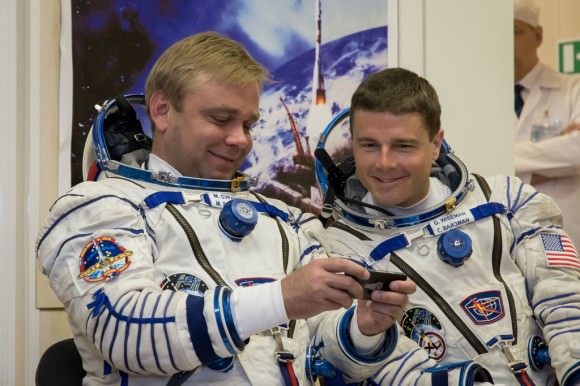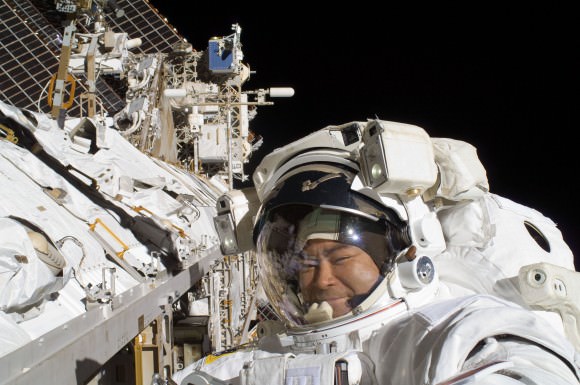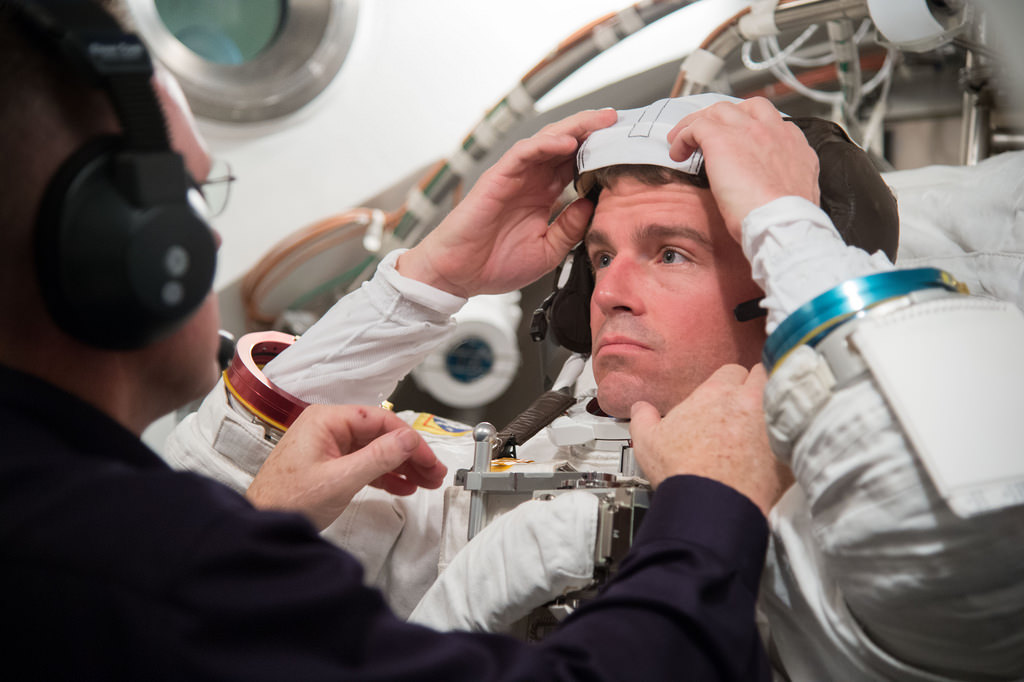Small populations make it really hard to do scientific studies, because the sample size may not be representative of the population being studied. And that’s the challenge with spaceflight, right before you start: only so many people head up there and take part of your experiments. With less than 20 people heading to space per year these days, that’s a tiny population to do medical studies from.
“One of the advantages that terrestrial medicine has is a lot of people to study,” said Jean Sibonga, the bone lead of NASA’s human spaceflight program. “While we’re acquiring our data using the conventional clinical methods for testing bone health here on Earth, terrestrial medicine is running these same studies and getting the results sooner.”
But for a small group being studied, the science is highly professionalized. NASA’s scientists are part of many professional societies ranging from anesthesia to bone science to nutrition. They collaborate with people all over the world. And slowly, as the results come in, they say they are making progress in understanding how space deconditions our bodies and how to make them stronger again.
With bone — where for decades, physicians have tried to figure out which populations are most at risk for fractures — comes an example of another hurdle. The astronauts are young, usually 50 or below, making them statistically one of the least at risk for fractures until they expose themselves to microgravity. This means that comparing them to seniors is “clearly not an appropriate test for our population,” Sibonga said.

But for what it’s worth, NASA has adapted international clinical guidelines to identify astronauts who have optimal bone health, and to see if the “countermeasures” — weight-bearing exercises — are having any success. This also means looking at the astronaut’s entire picture of health, from family history to medication intake to hormone levels, to see if these variables have any sorts of effect. (More on the results of these tests tomorrow.)
The issue with astronauts, Sibonga said, is they go through very rapid bone losses — even faster than what postmenopausal women experience. Astronauts lose about 1% of their bone density on average per month from their hip and spine. In aging women, vertebrae are the most affected and they can find themselves with “compression fractures” where the vertebrae collapse and their backs are stooped over.
Astronauts may be at risk, but it’s hard with tests on the space station to see if this is happening real time. This work has to wait until they get back to Earth. Sibonga said NASA is trying to fix that. “We’re doing market surveys, and if we find a promising technology for inflight monitoring, we will work to develop and validate these tests in these astronauts.”

Sometimes that technology comes from other sectors. The idea of “loading” not only applies to human health, but also to engineering. So some of the same models could have relevancy between engineering and humans. One device NASA has been testing on the ground is a quantitative computed tomography (QCT), an imager that quantifies the amount of bone mass an astronaut has in true three dimensions. From these QCT data, engineers can develop models to estimate the mechanical loads that would cause a bone to fracture. But only a handful of people have applied this engineering model to biological systems, Sibonga said.
Naturally, NASA is also interested in how much bone mineral density (BMD) comes back after a mission. BMD tests are done every three years in astronauts from the time they are selected (bearing in mind the technology was not available until about the mid-1990s). Uniquely, NASA also invites its astronauts back after they leave or retire to continue the tests — a practice even the military branches in the United States don’t do. This allows the agency to do long-term population studies on its astronaut corps.
Sibonga added that NASA’s science is proceeding at an aggressive pace, given the small population and mission schedules, and cited a few examples of research papers on skeletal health and femoral strength as examples.
This begins a three-part series on astronaut health. Tomorrow: How to exercise in zero G. Two days from now: Battling against what space does to your health.

